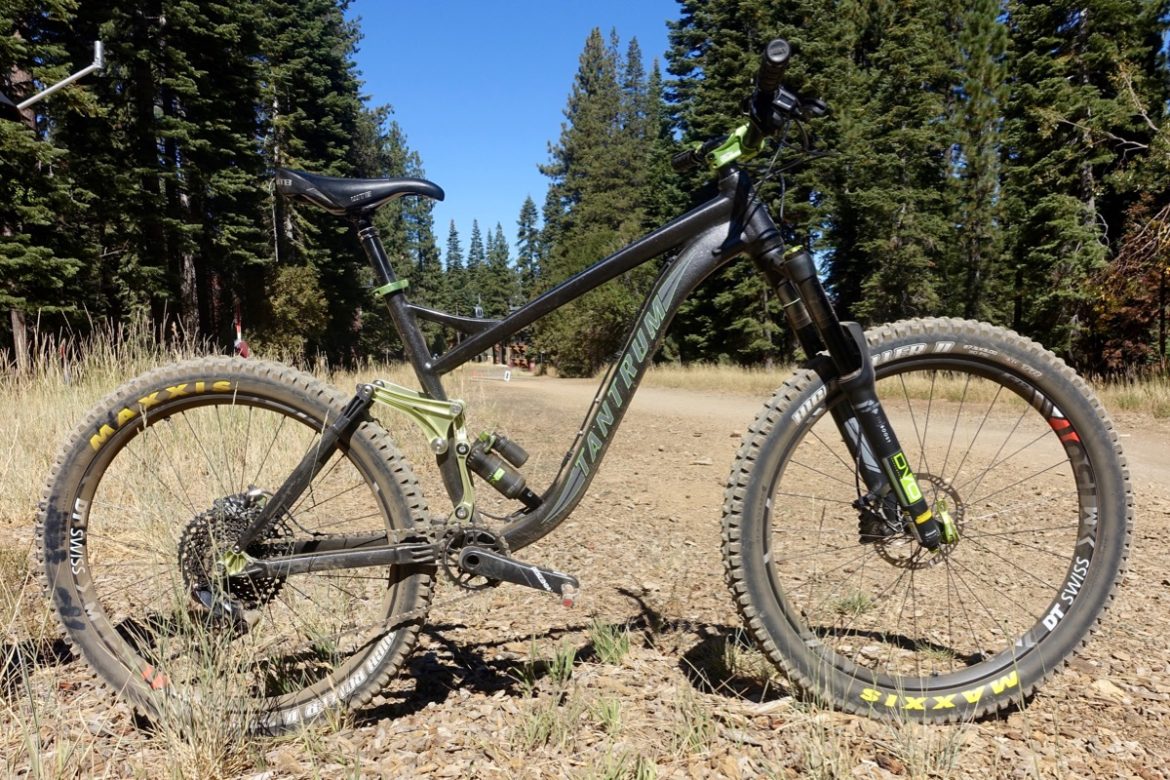
Tantrum Cycles makes some pretty big claims about their patent-pending Missing Link suspension design. In 2016, the company ran a successful Kickstarter campaign promising potential buyers the “Missing Link ‘does the impossible; pedals like a hardtail and delivers a plush ride over bumps — without levers or electronics.'”
Of course buyers should approach any Kickstarter project with a hefty dose of skepticism, but glowing reviews soon followed from well known cycling publications. Still, the brand may not register on many consumers’ radar, including my own despite the fact that Singletracks published a story about Missing Link just last year.
I bumped into my friend Will at Interbike back in September, and he was raving about a test ride he had just finished. Will is a strong, talented mountain biker who manages a bike shop, and I know he’s not the kind of guy who spouts meaningless bike marketing talking points. Yet here he was, saying the Tantrum climbed like a hardtail but descended like an enduro bike. I decided I needed to try this bike for myself.
The man behind the Missing Link
Brian Berthold has been in the bike industry for a long time and has been involved in a number of important projects, as evidenced by his bio on the Tantrum website. I actually first met Brian in 2009 at the launch of the Kona Abra Cadabra, a bike based around a suspension system he designed called Magic Link.
Magic Link was unlike anything else on the market at the time, and it received positive reviews from the press, including yours truly. Kona has since moved away from the Magic Link, but Brian figured the design could be simplified and improved. Thus, the Missing Link was born.
Kinematics and geometry

Suspension kinematics are complicated to understand, especially as linkages and points of rotation are added. The top-level description of Missing Link goes something like this: pedaling forces cause the rear shock to extend, reducing sag and effectively locking the shock. However, all of the valving on the shock is still wide open, which allows the bike to respond to input from the terrain.
Once pedal forces are eliminated — on a descent, for example — the rear suspension system generally acts like a more traditional setup.
It follows that the rear shock extension actually changes the bike’s geometry, effectively steepening the head and seat tube angles by about 3-degrees according to Tantrum. The steeper geo, combined with an extended shock, is said to improve climbing immensely.
Officially, the 2018 Tantrum Shinning I tested (name inspired by a Simpson’s Halloween episode) offers 170mm of travel in the front, and 165mm in the rear. The 2019 version ups the front travel to 180mm.
In terms of the static geometry, the 2018 Shinning starts out with an uber slack 63.5° headtube angle. (The 2019 model is said to be even more slack, at 62°.) Many bike designers these days try to make up for a slack head tube angle (which generally inhibits climbing) with a steep seat tube angle, but not Tantrum. The 74° seat tube angle is about a degree below the average for 29er enduro bikes, though the 2019 Shinning dials the angle back up to the 75° average.

Reach and chainstay measurements (size large) are right in line with the industry for this type of bike at 460mm and 438mm, respectively. The reach on the size large I tested felt a bit short, but then again I’m tall and I had just ridden a 29er with 510mm of reach! Clearly reach is trending upward on the latest bikes, which could be a good or bad thing, depending on your perspective. The upshot is the Shinning felt comparatively easy to maneuver.

The build & components
While the Shinning is generally built up with 29er wheels, it’s also possible to go 27.5+, which is how my test bike was outfitted. Since Tantrum is small and at this stage, still pretty much building bikes to order, there doesn’t seem to be such a thing as a standard build. Each bike I saw was unique, almost like a mini experiment to see what works.
For those who are interested, the bike I tested was outfitted with DVO suspension, Maxxis High Roller plus tires, a Deity cockpit, 4-pot brakes, and a SRAM Eagle drivetrain.
On the trail

Of the three bikes I tested at Northstar Resort over two days, the Tantrum was my favorite in terms of descending. The DVO suspension felt plush, and the bike handled exceptionally well. The Shinning offered me all the travel I needed, and easily the smoothest ride of the bunch.

Pedaling the bike uphill briefly left me impressed. The Tantrum Shinning certainly feels different than other bikes with the same amount of travel or similar geometry.
Did it ride like a hardtail? It kinda did, but I honestly didn’t get enough time to say what was different. If anything, I have more questions than I did before my ride. But there’s definitely something different going on here. And in a good way.
So why isn’t everyone riding this?

Perhaps the biggest question I have about Tantrum Cycles and the Missing Link is why the brand isn’t more popular or widely adopted than it is after a couple years on the scene.
In 2016, Richard Cunningham from Pinkbike wrote, “I’ve ridden many trail bikes that were supposed to, ‘…pedal like a cross-country bike and descend like a DH bike.’ […] Only two have actually performed that ballet: the [Tantrum] Meltdown with its Missing Link, and a Kona Process outfitted with Fox’s prototype Live Valve electronic suspension.”
And Zach Overholt, Bikerumor’s mountain bike expert, shared a similar assessment. “I’d go as far as saying the [Tantrum] Meltdown may be one of the best climbing 160mm travel enduro bikes I’ve ridden.”
I asked Brian what he sees as his biggest challenge.
“My biggest constraint is help and money. If I had 200 bikes today they would all be gone. So production, but that has been hampered by me being too busy with existing customers to work on it. But I’m on it.” (Brian is quite literally on it, and sent this reply from Taiwan.)
Tantrum has stopped taking pre-orders to get caught up and to take care of existing customers, but the future appears promising for Missing Link and the Tantrum brand.
If only mountain bike publications would quit saying such good things about how the bikes perform, Brian might actually be able to deliver more bikes.


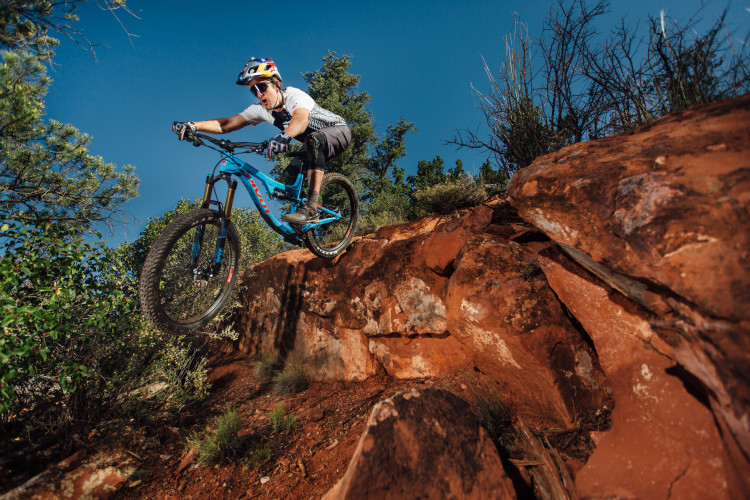


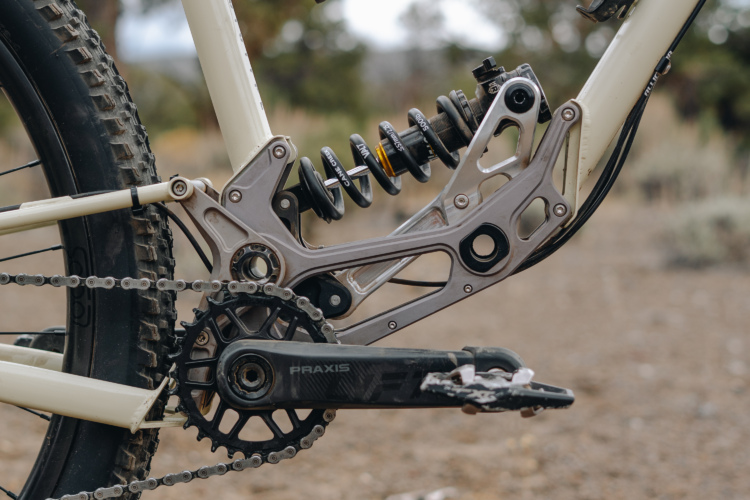
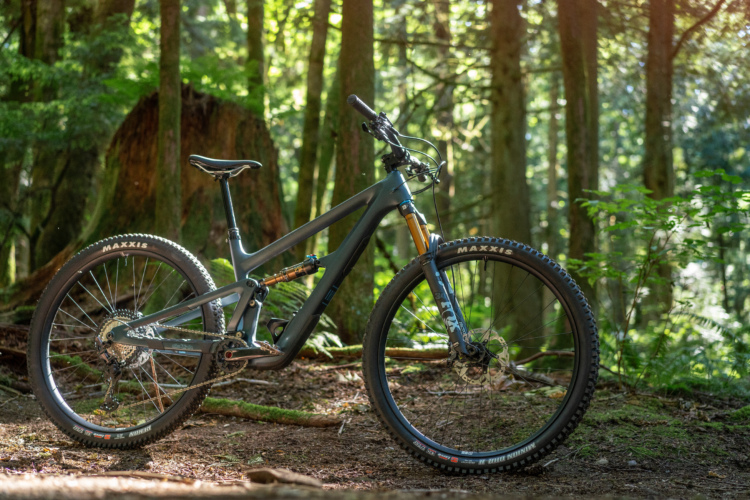
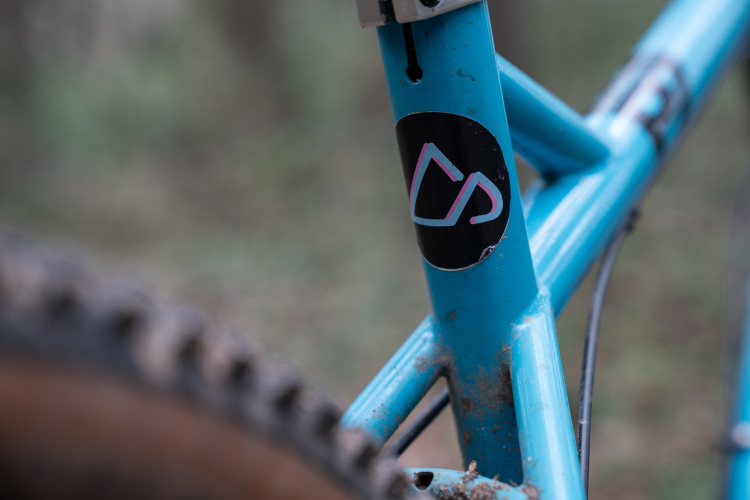



9 Comments
Nov 9, 2018
Nov 9, 2018
Nov 9, 2018
Nov 9, 2018
Nov 9, 2018
Nov 9, 2018
Nov 9, 2018
Nov 9, 2018
https://www.singletracks.com/blog/mtb-gear/8-gearbox-mountain-bikes-spotted-at-eurobike-2016/2/
https://www.singletracks.com/blog/mtb-gear/8-gearbox-mountain-bikes-spotted-at-eurobike-2016/7/
Just wanted to point that it seems like Tantrum is all about pushing the envelope and trying unusual things.
Nov 9, 2018